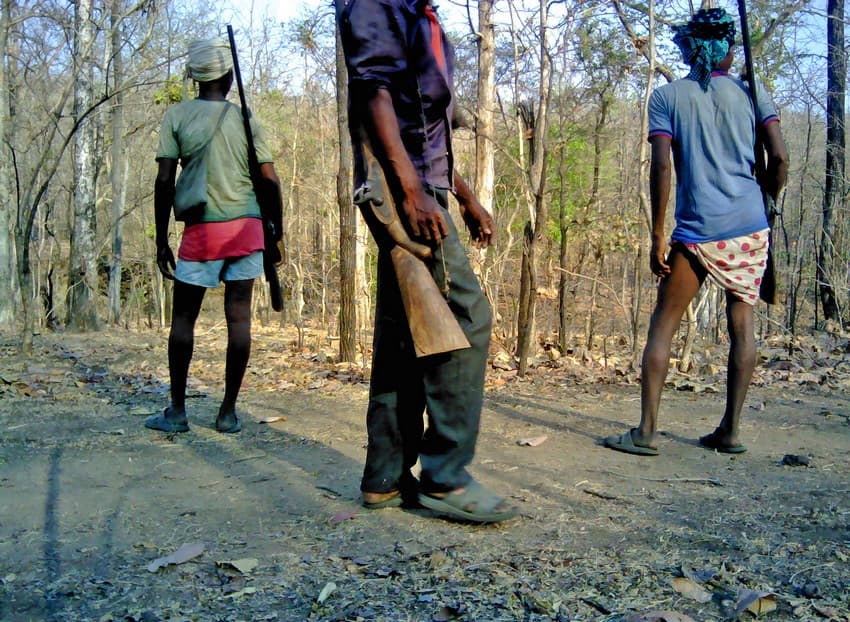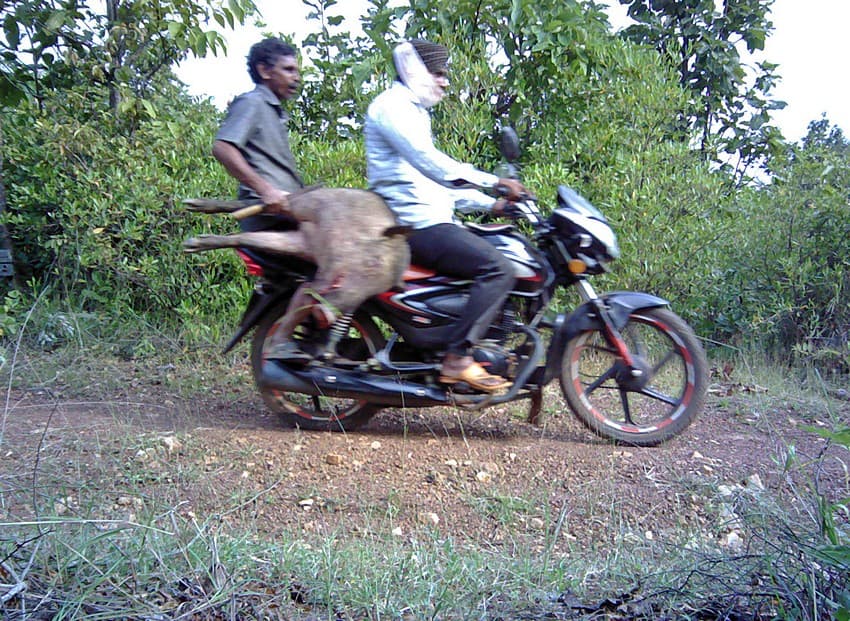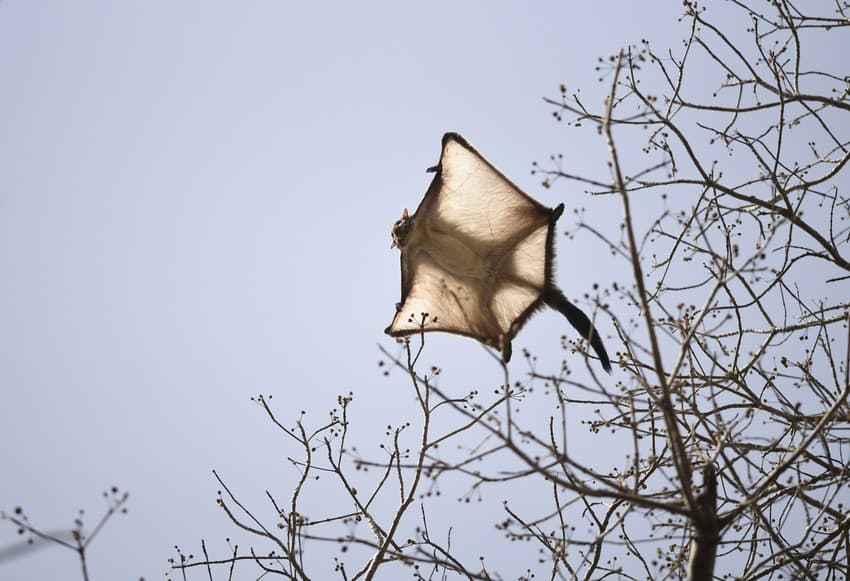The threat of wildlife crime has always loomed large over wildlife in India. Be it the hunting and poaching of charismatic, larger mega-fauna such as the tiger and the Indian one-horned rhino, or the lesser-known and lesser protected ungulates and other smaller animals such as hares, monitor lizards, etc. Hunting for meat consumption and illegal trade has had considerable impact on wildlife populations. Now the COVID-19 pandemic is making it worse.
In June 2020, TRAFFIC, a wildlife trade monitoring network instituted by the World Wildlife Fund (WWF) and the International Union for Conservation (IUCN) came out with a report titled ‘Indian wildlife amidst the COVID-19 crisis: An analysis of poaching and illegal trade’ whose findings revealed “a significant increase” in the reported wildlife poaching cases in India between February 10 to May 3, 2020. “Reports of poaching incidences for consumption and local trade have more than doubled during lockdown although there was no evidence of stockpiling of wildlife products for future trade… The study indicates that despite consistent efforts by law enforcement agencies, wild animal populations in India are under additional threat during the lockdown period,” TRAFFIC further stated. Small mammals such as hares, porcupines, pangolins, giant squirrels, civets, monkeys and even small cats were targeted in the lockdown. There was a significant rise in recorded incidences of hunting of leopards. The number of arrests made by the law enforcement authorities too soared during the lockdown phase.

Incidences of hunting and other wildlife crimes have spiked since COVID-19 took hold in India forcing the country to enter a paralysing lockdown. This camera trap image is used for representation purposes only. Photo credit: WCT.
The hunters, it was reported, had been taking advantage of the movement restrictions of the local people who are an important source for intelligence gathering and alerting authorities through tip-offs. Since the pandemic broke out and lockdown was instated, it gave the poachers a wide berth to operate in and around national parks and wildlife sanctuaries. On May 9, 2020, an adult male greater one-horned rhino was found dead, its horn brutally cut off, in Kaziranga National Park. Considering that poaching was seeing a stark decrease in the region since 2019 due to improved protection efforts, this incident was evidently enabled by the circumstances of the pandemic. The lockdown saw more wild animals venture closer to humans settlements due to momentary reduced disturbance. This made them all the more vulnerable to poachers. Forest Departments across all states have been on high alert and under increased pressure to combat poachers under these circumstances.
Cut to now, nearly seven months later, wildlife hunting continues to rear its head under these extraordinary circumstances. Pandemic has destabilised India’s economy, millions have lost their jobs, thousands forced to migrate back to their rural, smaller home towns and villages from urban cities. Displacement, unemployment, and unrest may have pushed several people to hunt wild animals for meat consumption and local trade.
In Maharashtra, the forest staff has made increasingly more arrests and seizures in the past few months for hunting of smaller-bodied animals, both, within and outside Protected Areas. Many frontline field staff members who have received training under the Wildlife Law Enforcement Training (WLET) programme regularly organised by Wildlife Conservation Trust (WCT) inform the WCT team members of rising frequency with which several herbivores and smaller-bodied animals such as the monitor lizards are being hunted.

Extraordinary circumstances presented by the pandemic has seen more people resort to hunting wild animals for consumption and local trade in India. This camera trap image is used for representation purposes only. Photo credit: WCT.
“Hunting for subsistence was always a big factor. The pandemic situation has increased the proximity to wildlife and also with more time on people’s hands, we have seen a stark rise in engagement in hunting and other such activities detrimental to wildlife,” says Kiran Rahalkar, Head -WLET Programme, WCT.
In October 2020, it was reported that Odisha, within seven months saw a large spike in hunting of leopards with nine leopard skins seized from across various parts of the state, and three other leopard deaths reported. This year, reportedly, also saw seizure of over 1,500 kg. of sea cucumbers from Lakshadweep islands, worth Rs. 6 crore. The alarming rate at which the sea cucumbers that is legally accorded the highest level of wildlife protection (Schedule I species) under the Wild Life (Protection) Act, 1972, are being illegally extracted and traded is worrying. According to officials, the illegal sea cucumber trade has become more acute due to the pandemic. The marine ecosystems are already under enormous pressure due to overharvesting of the marine biodiversity, harmful fisheries, pollution and rising temperatures. Unregulated harvest of fish due to COVID could prove disastrous for our oceans.
Further inland, there has been a surprising upsurge in hunting instances of the more elusive and rarely sighted Indian giant flying squirrels in various districts of Maharashtra such as Chandrapur, Balaghat, Gondia and nearby areas. Says Sanjay Thakur, Senior Trainer-WLET, WCT, “This arboreal mammal is hard to sight largely due to its nocturnal habits. It secludes itself in tree canopies and cavities during the day. In the past few months these flying squirrels are being increasingly hunted for animal derivatives to use in medicines rumoured to help in curing COVID-19 symptoms.”

Widespread belief in traditional animal-based remedies for preventing and treating diseases has led to rise in hunting of the elusive Indian giant flying squirrel for “curing” COVID-19 symptoms using animal parts. Photo credit: Aditya Joshi
The Indian giant flying squirrel populations are already under pressure from hunting for meat and traditional medicine. Habitat destruction is further accentuating the stress on this species. The new unsubstantiated demand as COVID medicine could sound a death knell for this nocturnal, arboreal mammal. Flying squirrels are sensitive to anthropogenic activities, and these canopy-dwelling animals can thrive only when its deciduous and evergreen forest habitat remains intact. Gaps in tree canopies hinder their movements as they glide from tree to tree in search of food and mates. They are very good indicators of the forest’s health and an essential component in the forest ecosystem.
“A large number of people were forced to return to their villages during lockdown. Majority of them lost their employment in big cities. In the rural areas adjacent to natural forest and grasslands, this was followed by a rise in people resorting to hunting wildlife for pot and trade. Another crucial issue appeared to be widespread belief in traditional animal-based remedies for preventing and treating diseases. Local superstitions and magico-religious beliefs about animals further fuelled by fake news and disinformation also played its part. Lack of adequate medical facilities in rural areas and poor understanding of science behind health and diseases can be identified as major reasons that boosted this trend. COVID has shown us the urgent need of localising efforts to attain the Sustainable Development Goals (SDGs) by focusing on food, health security, quality education and opportunities of work for the millions living in and around forests, especially Protected Areas.” explains Thakur.
These uncertain times are testing the resilience of the people and the wildlife alike. Unsustainable hunting of wild animals will cause irreversible destabilisation of ecosystems whose knock-on effects will be hard to reconcile. The pandemic has further compounded the matters of wildlife protection and law enforcement for the Forest Department and other wildlife law enforcement authorities.
“In a country where a considerable proportion of people still co-inhabit spaces that are replete with wildlife, the COVID-related economic shock, as predicted, has catalysed an increase in bush meat hunting. However, credit must go to the Forest Department for working unflinchingly through the pandemic to curtail the onslaught on wildlife. Nevertheless, the past seven months can be treated as an indication of what can happen to our wildlife and forests when livelihoods of millions of people stand to be lost due to climate-change related factors, which are likely to be far more chronic and serious in nature,” opines Dr. Anish Andheria, President, WCT.
——————————————————————————————————————————————————————
About the Author: Purva Variyar is a conservation and science writer at the Wildlife Conservation Trust, India.
Disclaimer: The author is associated with Wildlife Conservation Trust. The views and opinions expressed in the article are her own and do not necessarily reflect the views and opinions of Wildlife Conservation Trust.
——————————————————————————————————————————————————————
Your donations support our on-ground operations, helping us meet our conservation goals.
——————————————————————————————————————————————————————
Related Links
- 2016 wins the race for – “The Hottest Year on Record”
- The Impact Of One Health On Conservation
- Tightening The Noose On Wildlife Crime
- Wildlife Crime: Prosecution Hurdles
- Illegal Wildlife Trade: The Need to Look Within

